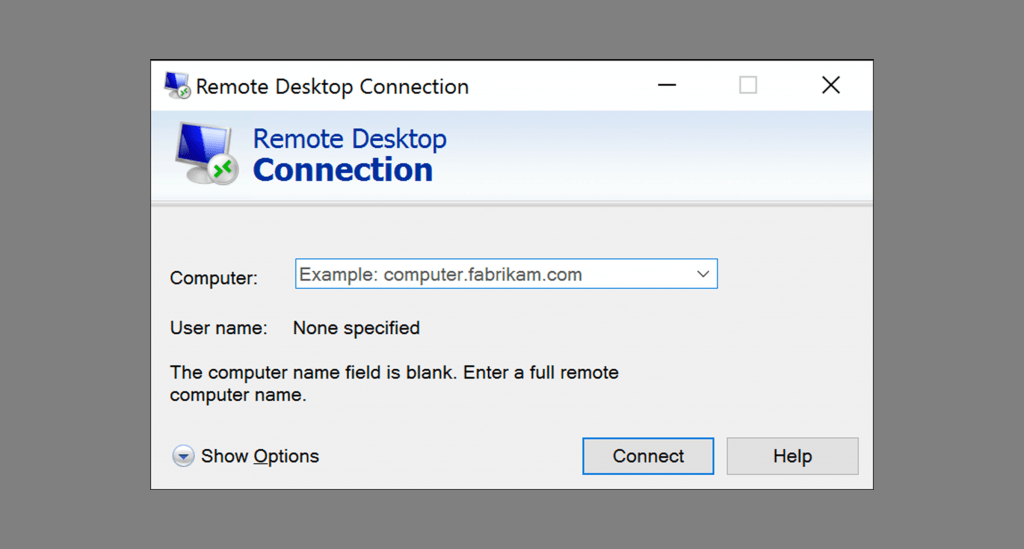
- #MICROSOFT REMOTE DESKTOP PROTOCOL INSTALL#
- #MICROSOFT REMOTE DESKTOP PROTOCOL SOFTWARE#
- #MICROSOFT REMOTE DESKTOP PROTOCOL LICENSE#
- #MICROSOFT REMOTE DESKTOP PROTOCOL PROFESSIONAL#
- #MICROSOFT REMOTE DESKTOP PROTOCOL SERIES#
If you receive an error message stating resources have not been set up for you, contact the IT Services Help Desk. Your college's remote computer lab screen appears. Unselect the checkbox for "Allow my organization to manage my device." Click or tap the link "No, sign in to this app only" to continue.

Keep the checkbox for "Launch Remote Desktop when setup exits" checked. Click or tap Finish. If successful, the screen announcing "Completed the Remote Desktop Setup Wizard" appears.
#MICROSOFT REMOTE DESKTOP PROTOCOL SOFTWARE#
The software installs on your computer.
#MICROSOFT REMOTE DESKTOP PROTOCOL LICENSE#
Review the license and, if you agree, check the box for "I accept the terms in the License Agreement." Then click or tap Next.
#MICROSOFT REMOTE DESKTOP PROTOCOL INSTALL#
Install Microsoft Remote Desktop for Windows If you're unsure whether your computer runs Windows 64-bit or Windows 32-bit, see these instructions. Use the links below to download the free Microsoft Remote Desktop application on your Windows computer. Once installed, this software allows you to connect to the remote computer lab. Download Microsoft Remote Desktop for Windows Connecting via web browser uses a different web address. ( Learn more about D2L.) Be sure to use the web address for connecting to remote computers via desktop application. If you need to use a remote computer lab, your instructor will list web addresses on your D2L course site.

Some other Microsoft® products, such as the software that powers media streaming from a computer to an Xbox 360®, also use the remote desktop protocol behind the scenes.Windows: Connect to Remote Computers via Microsoft Remote Desktop Although RDP is a proprietary protocol, several client applications, such as tsclient, are available for Linux and other Unix®-like operating systems.
#MICROSOFT REMOTE DESKTOP PROTOCOL PROFESSIONAL#
Server software is included in most server operating systems offered by Microsoft®, as well as some professional level flavors of Windows®. On the sever side, load balancing features are supported to equally distribute resources on servers accepting many simultaneous connections.Ĭlient software that supports the remote desktop protocol is included in every version of Windows® from XP forward Microsoft® also offers an RDP client for the Mac®.

Using less colors can speed up a connection, and RDP can compress data as well. New data is only sent when something on the screen changes, which means few packets of information are needed to interpret a change.

The remote desktop protocol also offers several features to increase performance on a slow or unreliable connection. Once a client system, also known as a terminal, is logged into the host computer, it displays the host’s screen and allow users to access files, applications, and other resources on the host machine. RDP forms the basis for Microsoft®’s remote desktop software, currently known as Remote Desktop Services. In the case of the remote desktop protocol, these rules specify how the image on the screen of one computer is encoded and sent over a network connection to be displayed on another computer. Remote Desktop Protocol allows one person to access another's computer remotely.Ī protocol is a set of rules and standard behaviors that govern communication between different computers. Remote desktop software that uses RDP is available for several platforms and is used behind the scenes in some other Microsoft® products. The protocol allows communication between a client and server on nearly any type of network, and features encryption, bandwidth restriction, and load balancing capabilities.
#MICROSOFT REMOTE DESKTOP PROTOCOL SERIES#
RDP powers Microsoft®’s Remote Desktop Services, a series of remote desktop applications. The Remote Desktop Protocol (RDP) is a protocol developed by Microsoft® to enable remote desktop connections in which a user on one computer can see and control the screen on another.


 0 kommentar(er)
0 kommentar(er)
